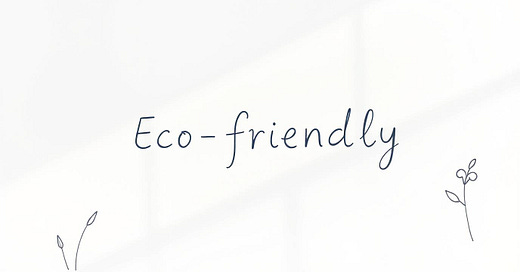How Sustainability is Influencing Graphic Design Trends
Sustainability is no longer a niche concern. It’s mainstream, and it’s rewriting the rules of visual communication.
Is it possible for a poster, a package, or a brand color to help fight climate change?
Turns out — yes. But it depends on how they’re designed.
In a world facing ecological crises, sustainability has moved beyond politics and policies. It’s become a design problem. Or rather — a design opportunity.
Today, graphic designers aren't just picking fonts and color palettes; they're making choices that can reduce waste, cut emissions, and inspire greener living.
But how, exactly, is this shift happening?
Let’s explore the growing influence of sustainability on graphic design — and the surprising ways it's transforming visual culture.
Why Graphic Design Has a Role in Sustainability
Graphic design used to be considered a purely aesthetic practice.
Make it pop. Make it pretty.
Now?
It’s a decision-making engine for sustainable innovation.
Think about it: every visual decision — from the size of a poster to the materials used in packaging — affects environmental impact.
🌱 A smaller label means less ink.
🌱 Eco-conscious typography means better readability with fewer printing resources.
🌱 Minimalist branding means less clutter, more clarity — and often, less waste.
Design is where form meets function — and in 2025, it also meets responsibility.
The Rise of Eco-Aesthetics
Designers are shaping what sustainability looks like. A distinct visual language is emerging.
It’s soft, grounded, and human. But it's not all leaves and recycled symbols anymore.
Trending Elements in Sustainable Design:
A modern sustainable design board. Natural tones, soft textures, minimalist layout.
Packaging Design Is Going Green — Fast
Here’s a wild stat: Packaging accounts for over 30% of global landfill waste.
It’s no surprise that the packaging industry is undergoing a massive eco-makeover — and graphic designers are leading the charge.
Key Shifts in Sustainable Packaging Design:
Biodegradable or compostable materials - Designers are working with plant-based fibers, mushroom leather, and even seaweed packaging.
Monomaterial simplicity - Using only one type of material makes recycling easier. That also means fewer printing layers, which lowers ink usage.
Design for disassembly - Making packaging easy to break down into recyclable parts — labeled clearly and attractively.
🧠 Design Trick: More and more brands are turning packaging into reusable objects. Tote-able cereal bags? Refillable soap dispensers? That’s graphic design with long-term impact.
Digital Design Is Going For “Low-Carbon Aesthetics”
You think going digital is automatically sustainable — but that’s not the whole story.
Every website, app, or social ad uses electricity, and some design choices are more energy-hungry than others.
Large image files, looping videos, or dark-mode themes (depending on the device) all influence carbon usage.
So, what are designers doing about it?
Low-Impact Digital Design Tips:
Simple, accessible, and efficient — digital interfaces can be beautiful and low-carbon.
Brands Are Building Trust Through Eco-Storytelling
There’s been a shift in branding from look how luxurious we are to look how responsible we are.
More than ever, brands are integrating storytelling that explains their sustainable values.
But it has to be more than greenwashing.
Authenticity plays a huge role here, and that’s where good design makes the difference.
Design as a Trust Builder:
Transparent visuals: flowcharts, timelines, carbon footprints
Earth-friendly typography: rounded fonts, hand-lettered scripts
Impact data turned into infographics
Nature-inspired iconography
People don’t just want products. They want proof. Design gives them both.
Case Study: How One Brand Changed Everything with a Font
In 2022, a Scandinavian skincare brand replaced their standard font with Ryman Eco, a free, sustainable typeface. It’s designed with white space built into the letterforms, using 33% less ink when printed.
They changed nothing else — same packaging, same colors.
Within six months, they:
Cut ink usage by 28%
Reduced print waste costs by 15%
Got featured in five major sustainability blogs
One font. Big impact. That’s the power of eco-informed graphic design.
Where Graphic Design Trends Are Heading
Let’s wrap this up with a look at where all of this is going.
Future Sustainable Design Trends to Watch:
Augmented Reality Packaging -No print needed. Scan to see instructions, ingredients, or origin stories.
Dynamic Branding Systems - Logos and layouts that adapt to reduce screen or print load based on environment.
Circular Design Thinking - Creating with the end of life in mind — recyclable, repairable, reusable.
Eco-Centric Color Psychology - Using colors that signal environmental ethics and mental well-being.
Sustainability is no longer a niche concern. It’s mainstream, and it’s rewriting the rules of visual communication.
Designers today aren’t just solving aesthetic problems. They’re solving environmental ones. Every typeface, every icon, every decision now carries weight.
The future of graphic design isn't just beautiful. It’s responsible, regenerative, and revolutionary.






